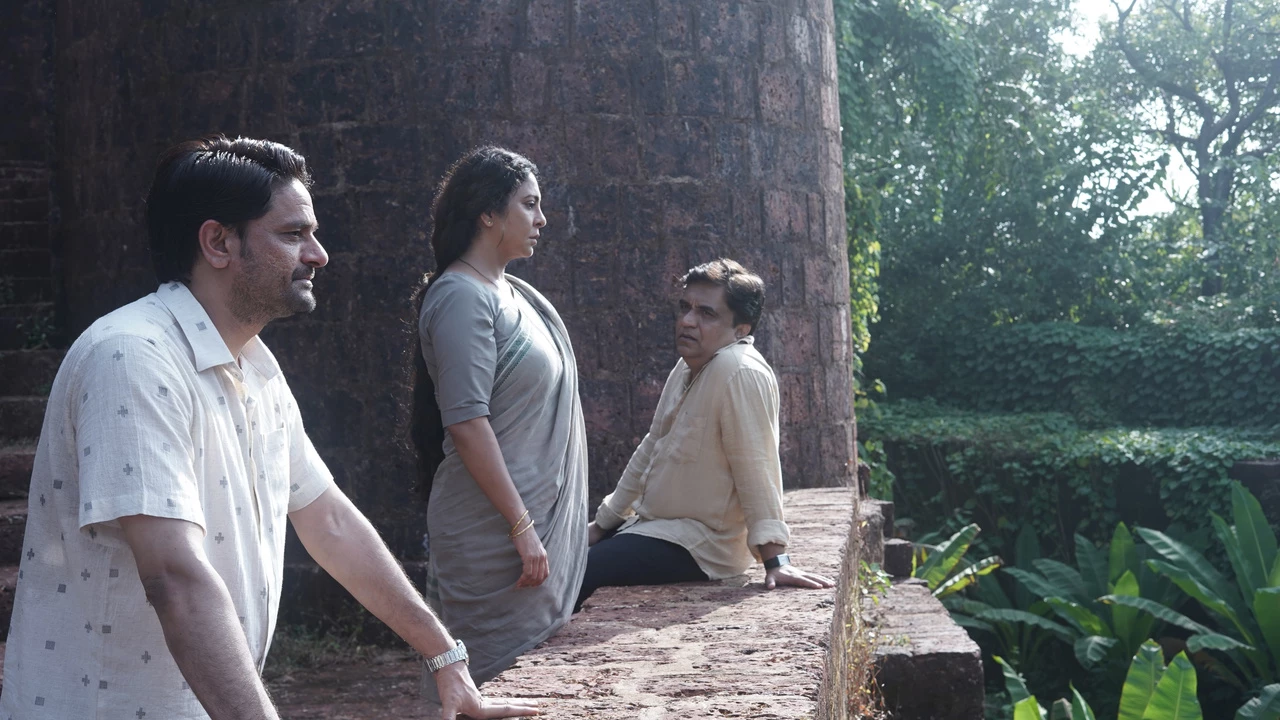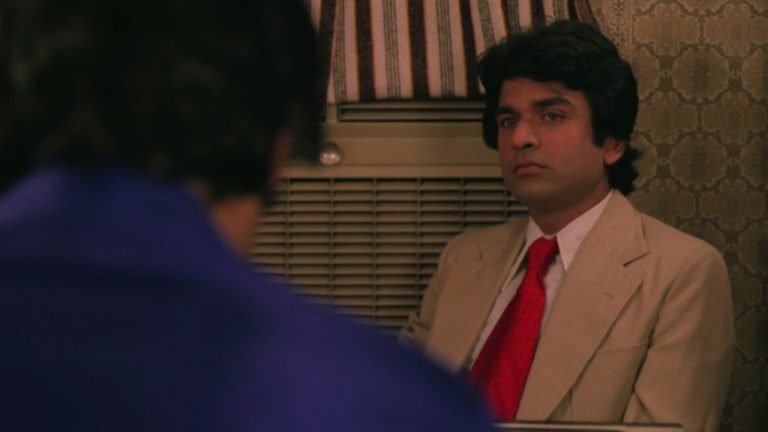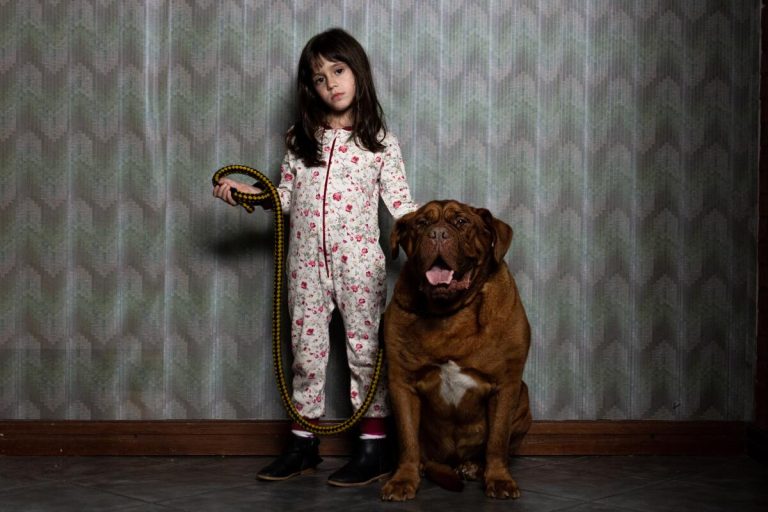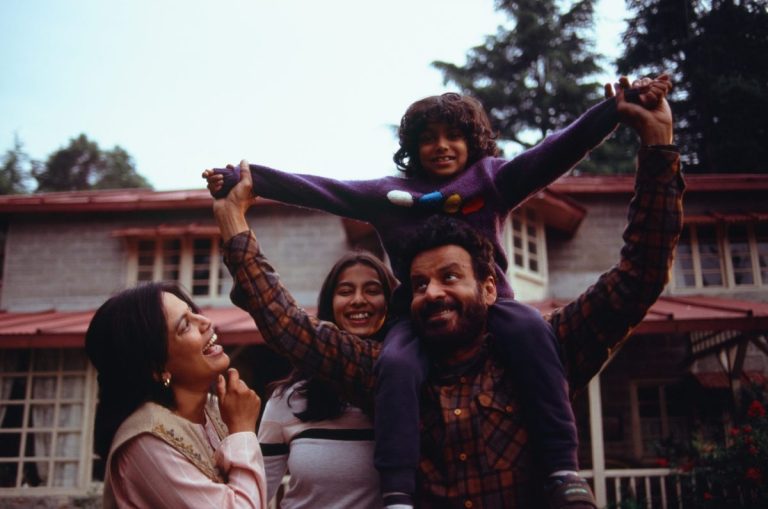Most films demand your attention with dramatic twists, sweeping scores, and explosive emotions. “Three of Us” does something far more radical. It asks for your silence. Avinash Arun’s 2023 masterpiece isn’t just a film about impending memory loss; it’s a meditation on how places become the keepers of our histories when our minds can no longer hold them. While critics rightly praise Shefali Shah’s devastatingly restrained performance, what often goes unspoken is how the film’s genius lies in its spaces – the crumbling school buildings, the relentless coastline, the hollowed-out homes – all of which remember Shailaja even as she forgets herself.
The government school in Konkan isn’t just a backdrop. It’s a silent witness, a repository of everything Shailaja once was. The camera lingers on the details most films would treat as set dressing: the peeling blue paint on the walls, the rusted chains of a swing set frozen in time, the ghostly remnants of chalk dust on a blackboard. These aren’t just textures, they’re fragments of a life. In one of the film’s most haunting moments, Shailaja runs her fingers along the grooves of a wooden desk, searching for something she can’t name. The scene lasts just a few seconds too long, forcing us to sit with the weight of that gesture. She isn’t just touching furniture, she’s trying to retrieve herself. The building remembers her childhood, her laughter, her scraped knees. It remembers the girl who once sat there, even as the woman she’s become struggles to.
This is the film’s quiet rebellion. In stories about dementia or alzheimers, we expect the tragedy to unfold in facial expressions, in faltering speech. “Three of Us” shifts the focus outward. The horror isn’t just in Shailaja’s mind – it’s in the walls around her, which hold memories she can soon no longer access. The Konkan coastline isn’t a picturesque postcard. It’s a relentless, indifferent force—beautiful and cruel in equal measure. In one scene, Shailaja walks along the shore, her footprints erased almost instantly by the tide. The metaphor is obvious, but the film refuses to underline it. There’s no swelling music, no dramatic close-up. Just the quiet, inevitable disappearance of her presence.
Later, she sits on the sand, watching the waves. No tears, no monologue. Just a woman staring at the water, knowing that soon, even this moment, will be lost to her. The sea doesn’t care. It takes and gives back capriciously, just like memory itself. Some things wash ashore again – a scent, a snatch of song, a face half-recalled. Others are swallowed forever.
The most devastating scene isn’t the one where Shailaja forgets a name. It’s when she returns to her childhood home, now occupied by strangers. She steps inside, and the house feels wrong. The furniture has been rearranged. The walls are of different colors. The new owners move through the rooms with the casual ease of people who don’t realize they’re living inside someone else’s past. They offer tea and make small talk, utterly unaware that they’ve become interlopers in her history. Shailaja doesn’t cry. She doesn’t scream. The pain is in the way her hand lingers on the doorframe, a silent apology to the house, for no longer being the person who belongs there. This is dementia reframed: not just as the loss of memory but as the uncanny horror of being a stranger in your own life.

There’s a moment so subtle you might miss it. Shailaja walks past a mirror and doesn’t look. Most films would have given us the cliché, the dramatic close-up of a woman confronting her fading reflection. “Three of Us” understands something deeper. The real terror isn’t in seeing yourself disappear. It’s in avoiding the mirror because you already know what’s happening. That single, fleeting choice to not look tells us more about Shailaja’s dissociation than any monologue ever could.
On the surface, “Three of Us” seems to be about a woman torn between two men – her husband, Dipankar, and her childhood love, Pradeep. But that’s a misreading. The tension isn’t romantic. It’s temporal. The famous hotel scene, where all three share a meal, isn’t awkward because of jealousy. It’s tragic because Shailaja isn’t choosing between two men. She’s trapped between three versions of time – past, present, and the future. She wants all of herself —the child, the wife, the woman she’s becoming—and knows she can’t have them.
In an era where movies fight to be remembered—through twists, shocks, or viral moments- “Three of Us” does the opposite. It embraces transience. Like Shailaja, it’s ephemeral. It doesn’t beg for awards or thinkpieces. It asks quieter, harder questions:
- What places still carry your presence?
- When did you last look in the mirror and recognize yourself completely?
- What will be left of you when your memories are gone?
This isn’t a film you watch. It’s one you haunt. Long after it’s over, it lingers like a shadow in an empty hallway. There’s a moment late in the film where Shailaja hums a tune she can’t quite place. It’s a fragment of something, a melody without an ending. That’s what “Three of Us leaves” us with: not answers, but echoes. We’re all, in some way, unfinished songs. Our memories fade. Our histories get rewritten. The places that knew us change hands. But for a fleeting moment, this film lets us believe that maybe—just maybe—the walls remember. Even when we no longer can.









👏🏽👏🏽